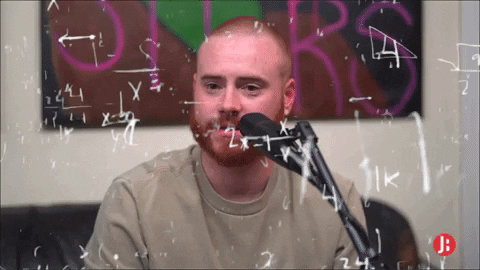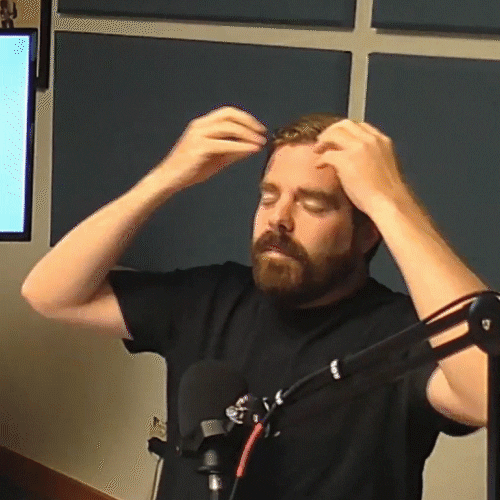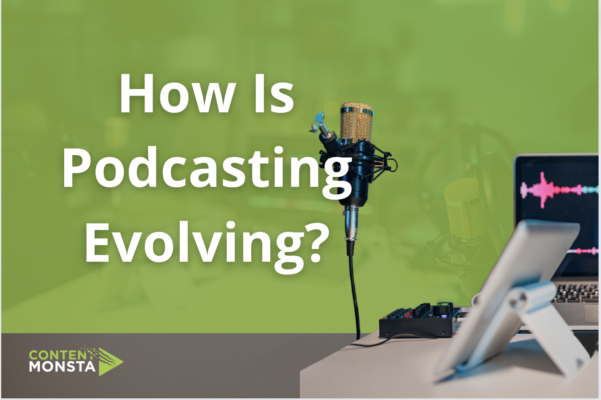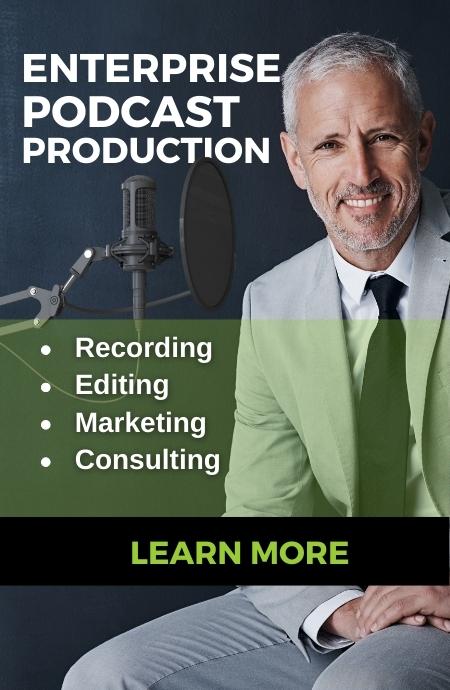Podcasting is evolving. They now come in many forms – audio, video, and all of the derivative content from the show. It’s no use in trying to hold on to the traditional “it must be audio” or “it must be an RSS feed” mentality. (Most of you reading this may not even know what an RSS feed is – nor care.)
With no new term to call it, the name podcasting remains – whether you listen to it, watch it, or choose to listen to a video while not watching – it is still a podcast.
In fact, many people who consume podcasts on video platforms like YouTube were never audio-only listeners.
Many of the podcasts on YouTube don’t even have an audio version – yet their creators (and consumers) still call them podcasts.
So, in today’s terms…

What Is A Podcast?
A podcast is episodic or serial content created by an individual or company that is owned and distributed by the creator without dependency on mass media networks.
This content can be in audio or video format and is created for on-demand consumption by its targeted audience.
If you are wondering why the definition of podcasting deserves this update, it is helpful to understand where the term podcasting came from and how it was originally distributed.
The word “podcast” is a combination of two words: “iPod” and “broadcast.” The iPod was a very popular portable music player made by Apple back in the early 2000s.
People used it to listen to music and other audio files, like the ones we now call podcasts.
So in general, the term “podcasting” was created to describe a new way of sharing audio content that could be easily downloaded and listened to on portable devices – on demand.

Originally, podcasts were distributed using a technology called RSS (Really Simple Syndication) feeds.
RSS feeds allowed people to subscribe to their favorite shows, and when new episodes were released, they would be automatically downloaded to the person’s computer or portable device.
Over time, platforms and apps like Spotify, Apple Podcasts, and Google Podcasts provided a much easier way to not only subscribe to podcasts but also search for and integrate audio podcasts into our existing media consumption habits.
According to Edison Research in 2023, 42% of Americans 12+ have listened to a podcast in the last month, a new all-time high and up from 38% in 2022.
These numbers are based on audio, therefore the numbers including video are even much higher.

When Podcasters Took Over YouTube
Today’s podcasts are virtually the new talk show. A talk show that is owned and distributed by the creator in the content formats best suited for its audience.
So what happens when a podcaster turns on a camera and records a video of their conversation? They have a video show.
And what do they say on that video show of them recording their podcast? They say “Welcome to my podcast”.
As a result, the consumer learns that they are watching a podcast. Hence the birth of YouTube podcasts.
I often refer to when some radio shows like Howard Stern were put on cable TV. At that time, no one confused TV with Radio.
They understood that they were watching a TV show “of” a radio show. They didn’t look at their TV and say “I’m watching the radio!”
This is the exact opposite of what happened with podcasting on YouTube.
People watching podcasts on YouTube see video shows and say “I’m watching a podcast”. They never seem to consider that they are also watching a video show (of someone recording a podcast).
As a result of this confusion, the available statistics on podcast consumption are no less than cloudy.
Podcast statistics typically measure it as an audio medium and fail to take into consideration the amount of podcast consumption that takes place on video platforms such as YouTube.
Even when considering podcasting as an audio-first platform, statistics still show that podcasting is quickly gaining ground over traditional radio and TV.
Is a Podcast on YouTube Still A Podcast?
A podcaster on YouTube can still be considered a podcaster, even though they are using video and not an RSS feed for distribution.
This is because the core concept of podcasting is about creating and sharing episodic content, usually in an audio format.
However, the term “podcaster” has evolved over time to include creators who produce video content in a similar episodic format.
These YouTube podcasters sometimes referred to as “video podcasters” create content that can be enjoyed in a similar way to traditional podcasts.
They discuss various topics, interview guests, and provide information or entertainment through their shows.
While the primary format is video, many YouTube podcasters also make their content available in audio format through traditional podcast platforms, allowing listeners to choose how they want to consume the content.

Although they don’t use an RSS feed to distribute their content on YouTube, the platform itself has its own subscription system.
Users can subscribe to their favorite YouTube channels, and when new episodes are released, they get notified through the YouTube app or website.
This is similar to the way RSS feeds work for traditional podcasts.
So, a podcaster on YouTube can still be considered a podcaster because they are creating and sharing episodic content that is accessible, subscribable, and provides value to their audience, even though the format and distribution method might be different from traditional audio podcasts.
The Wrap on Podcasting – Video or Audio
To sum it up, if you are looking to create or consume a podcast, both audio and video are options.
Whether you want to consume audio on your phone while working out or watch a full-on video show conversation on your home TV, this is where you will find podcasts – no matter what definition you choose.
If you are ready to update your back catalog for YouTube, reach out to Content Monsta – we are hard at work upgrading podcasts to take advantage of YouTube’s new podcast discoverability for podcasts!

Designing a Winning Podcast Structure: Lessons from Behind the Scenes
If your podcast or video content isn’t landing, structure may be the problem. At Content Monsta, we’ve learned that leading with a strong hook, cutting the fluff, and mapping out every element – from intros to promos – keeps audiences engaged and improves results. Here’s how to structure your content for maximum impact.
Avatar Spam is Coming – and going.
Creating video clones for marketing purposes is not going to age well. In the next couple of years, you are going to see the rise and fall of a clever,

Why Human Expertise Still Wins: The Real Story Behind Scalable Content
AI tools promise instant content at scale, but the truth behind the scenes is far less simple. Software can’t coach a nervous expert, fix bad lighting, or capture authentic delivery. When it comes to high-impact video content, human expertise still makes the difference. This blog breaks down where automation works and where it falls flat.




